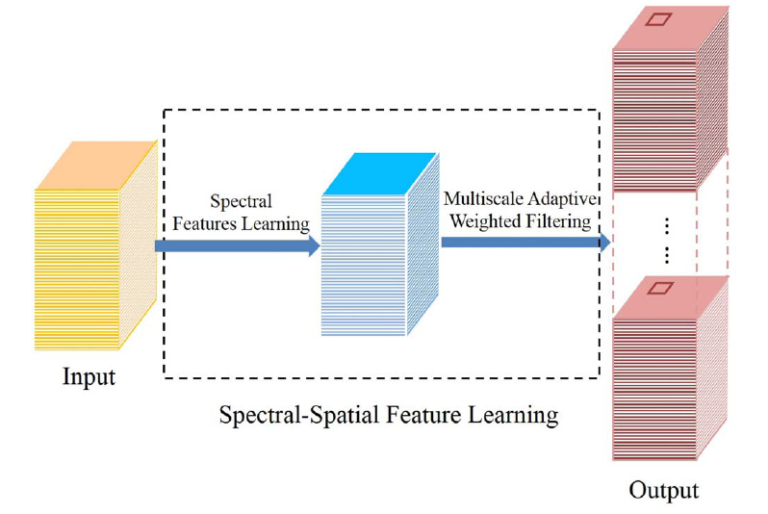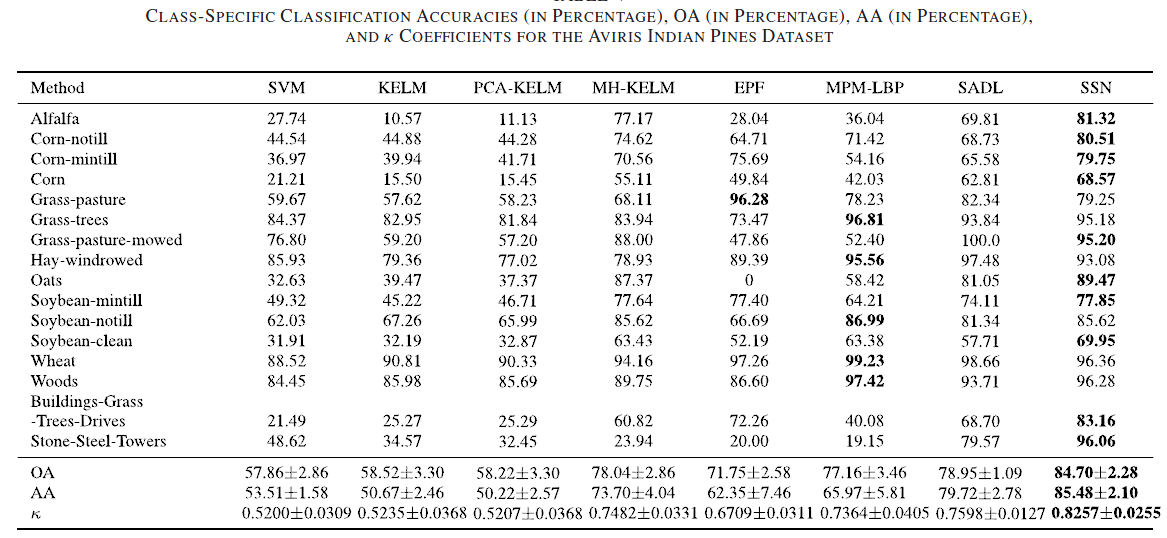Learning Hierarchical Spectral-Spatial Features for Hyperspectral Image Classification
Project summary:
This paper presents a hierarchical HSI classification model called spectral–spatial networks (SSN). Generally, HSI classification systems have the delicate task of describing a smooth land cover using spectral information with a high within-class variability. It is crucial to exploit the nonlinear characteristics of HSIs. The proposed method intends to learn the discriminative features using the hierarchical deep architecture. It can extract spectral–spatial features by iteratively abstracting neighboring regions and recomputing representations for new regions. In this way, the within-class variability will be reduced and the classification maps become smoother. Thus, the hierarchical deep architecture, which extracts more abstract and effective features of the HSI data, can overcome the problems faced by the shallow architecture. The main differences between the proposed method and other deep learning methods are that the convolutional filters used in the proposed method are learned directly from the images rather than learned by the stochastic gradient descent method used in the traditional deep learning methods, and that the structure of the proposed method is specially designed based on the characteristics of the HSI.
 |
| Figure 1. Architecture of SSFL. |
Experimental results:
 |
Reference:
Yicong Zhou, and Yantao Wei, “Learning Hierarchical Spectral-Spatial Features for Hyperspectral Image Classification,” IEEE Transactions on Cybernetics, vol. 46, no. 7, pp. 1667–1678, 2016. (Popular articles in 2016)